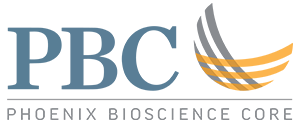PHOENIX, Ariz. — May 1, 2023 — Researchers at the Translational Genomics Research Institute (TGen), part of City of Hope, in collaboration with scientists at Jumpcode Genomics, have developed a next generation sequencing (NGS) workflow that could help transform the future of large-scale pandemic responses and focused clinical infectious disease testing. The NGS workflow can enable earlier detection and responses to pathogen outbreaks , variant strain typing, co-infection detection and individual human host response assessment. The workflow is pathogen agnostic and could potentially inform pandemic preparedness plans in the future.
In a study published in the journal Cell Reports Methods, the researchers detail the use of a CRISPR-based depletion technology developed by Jumpcode, a tool that helps eliminate “background noise” in genomic analysis. The report details a novel application of cutting-edge sequencing technologies, combined with Jumpcode depletion, to boost the detection of viruses in clinical samples.
The problem with existing approaches to emerging infectious diseases is that they rely on our knowing what the cause of the disease of interest is before a sample reaches the lab. That works well when faced with something relatively predictable, like an annual flu outbreak; but when the disease sending people to hospitals is a variant or organism never seen before, diagnosticians lose the advantage of that foreknowledge.
To overcome this issue the researchers, led by Nicholas Schork, Ph.D., Deputy Director of Quantitative Sciences at TGen and the paper’s senior author, applied Jumpcode’s depletion technology to optimize the detection of viral RNA sequences via NGS in samples from COVID-19 patients.
“DNA and RNA sequencing are so flexible,” said Schork, “because they enable us to spell out the genetic sequences of any organism found in the body and identify it based on those sequences. Instead of tailoring a test to a single organism, one could sequence everything in a sample—a nasal swab, for example—and just read off what’s there, whether it’s flu, coronavirus, Nipah, or anything else. The critical step is obtaining a clear set of identifying sequences among the millions of other sequences in a sample.”
While next-generation sequencing has the capacity to accomplish population-scale testing in response to a disease outbreak, historically its limitation has been low detection sensitivity. Jumpcode’s CRISPR-based depletion technology was used to “mute” non-viral and non-bacterial sequences that aren’t of interest in each sample. The resulting greater ability to identify likely viral and bacterial infectious produced an NGS-based test with sensitivity, specificity, positive predictive value, and negative predictive value comparable to RT-qPCR. The test was also able to accurately identify different variants of the COVID-19 virus.
In this study, the team looked at samples taken from people’s noses and found the virus that causes COVID-19 in most of them. They also found other viruses and good bacteria that live in the nose. They also tested control samples with different viruses to see if the methods could detect them.
Agnes Chan, Ph.D., a research professor at TGen and a co-lead author of the study, views this as an opportunity to raise the global sequencing standard.
“Given how many different sequences might be present in a single sample—especially in cases of co-infection, where a patient is afflicted by multiple pathogens at once—the ‘noise’ can be difficult to detangle from the information we need,” said Chan, “But Jumpcode depletion eliminates irrelevant sequences.” CRISPR technologies are well-established, but have not previously been leveraged to full advantage to enable infectious disease diagnosis.
As is often the case, the primary deterrents against widespread implementation of next-generation sequencing in hospitals include the cost and complexity of the process. However, Drs. Schork, Chan, and team showed that the clever use of CRISPR-based depletion and NGS can reduce costs substantially.
“The data presented in this manuscript highlights the potential of a novel technology to improve the sensitivity and specificity of nucleic acid sequencing as an agnostic diagnostic. In addition, the collaborators outline an initial blueprint for a national pandemic preparedness infrastructure that goes well beyond the sequencing technology,” said Keith Brown, Jumpcode Founder. “With the right investments from public and private institutions, and a willingness for collaborative data sharing on a national (and international) level, we can obtain the information necessary to contain and/ or prevent, treat, and potentially eliminate biological threats before catastrophic loss of life or negative societal and economic impact.”
Sequencing is one of a very few technologies flexible enough to be useful in a broad range of disease-related situations; and the improved sequencing workflow is even believed to be adaptable enough to provide insight into the patient’s immune response to infection, supplying further information to clinicians seeking a diagnosis.
“We’ve shown that a DNA/RNA sequencing-based test can be used, reliably and in more cost-effective ways, to detect any pathogen or combination of pathogens that might contribute to an infectious disease” said Schork, “so we’re a little better armed against a possible future pandemic, and this little contribution to preparation can go a long way.”

